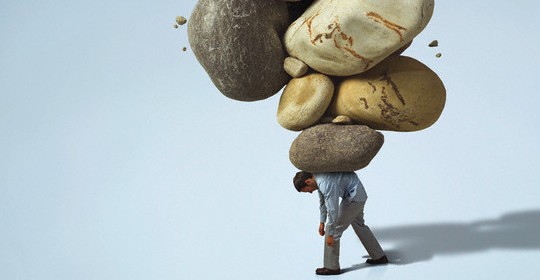
2013-11-28

Self Assessment To Improve back pain
Back pain is a common spine health problem. There are many reasons for back pain, but the most common one is caused by muscle imbalance. What is muscle imbalance? How does it affect the spine?
Our back has two sets of muscles for balance, but if we often use a certain set of muscles on activity, this set of muscles will be too strong, and a strong set will increase muscle tension and tightness. The stress in the joints, ligaments and tendons, which in turn causes excessive pressure on the peripheral nerves and back pain.
4 factors that causes muscle imbalance
There are many reasons for muscle imbalance, mainly divided into the following 4 categories.
1.Injury
Sudden pulling forces cause muscle injuries, such as: falls, sports injuries, muscle or ligament tears caused by weight lifting, etc.
2.Lack of exercise
In general, we have about 14 to 17 hours a day. With little or no participation in activities, sitting or standing for a long time will only make the back muscles tense, which in turn leads to muscle stiffness and weakness. This affects blood circulation and prevents the injured muscles from healing quickly. It also makes the body tired and weakens immunity.
3.Incorrect posture
If an incorrect posture is added after a muscle injury, this will increase back pain and increase the condition of muscle imbalance.
4.Overexercise
When most people experience back pain, their first idea is to exercise more so to activate the back muscle. So they try to exercise, hoping to improve the back pain. But it turns out that this kind of activity will make the back pain get worse. Because many people, without knowing the cause of their backaches, tend to over-exercise the overly tense muscles (the one that is too strong) to make the strong muscles become stronger and stronger. Relatively, the weaker muscles on the other side will become weaker. Therefore, the back pain get worst, it will accelerate the deterioration of the back muscle.
How to self assess?
After knowing the cause of back pain, how do you assess whether you have back pain or the severity of the problem? The following 3 items, respectively, are to assess the condition of the anterior pelvis, the condition of the posterior pelvis and the height of the pelvis, which are effective methods for self-assessment of back pain.
1. Asses the condition of the pelvis
Look in the mirror to check if you have the following conditions:
正常站立的盤骨姿勢-1.jpg)
figure 1 - normal standing pelvis position
站立時盤骨傾前,腰椎弧度增加。.jpg)
figure 2- pelvis tilted front, increase lower back curve
Then test the tension of the following two sets of muscles, both of which should be tested:
單腳屈膝拉後,測試前腿肌肉是否拉緊。.jpg)
figure 3 - testing quadriceps muscles
大腿向後壓,測試前腿肌肉是否拉緊。E38080.jpg)
figure 4 - testing quadriceps muscle
If the above situation occurs, you should do more stretching exercises (Figure 3) and (Figure 4).
2. Asses the condition of the pelvis
Look in the mirror and see if your pelvis is leaning more towards the back:
盤骨傾後.jpg)
figure 5 - pelvis tilted backward
The following tests the tension of the two groups of muscles, both sides should be tested.
單腳屈膝向上,測試能否提高至盤骨以上。.jpg)
figure 6 -lifting the leg above the pelvis
左腳屈膝,右腿屈膝後放在左腿上,然後雙手放在左膝向胸前拉,測試臂部肌肉有否拉緊。.jpg)
figure 7 - crossing one leg over to the other knee area and check the gluteal muscle has tightness
If the above situation occurs, you should do more stretching exercises (Figure 6) and (Figure 7).
Evaluation of pelvis height
Look in the mirror and see if your pelvis is high on one side and low on the other:
右邊盤骨高過左邊.jpg)
figure 8 - right side pelvis is higher than left side
The following tests the tension of the two groups of muscles, both sides should be tested.
坐在椅上,上身向左傾,測試是否肌肉覺得拉扯不能彎腰。.jpg)
figure 9 - side bend to left side and check the muscle is tight
If the above situation occurs, you should do more stretching exercises (Figure 9).

 Book an Appointment
Book an Appointment


